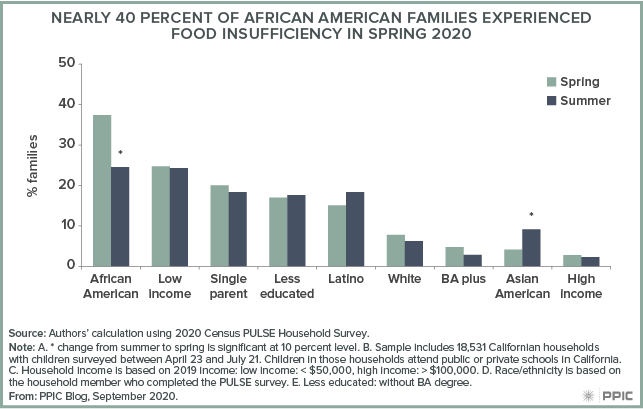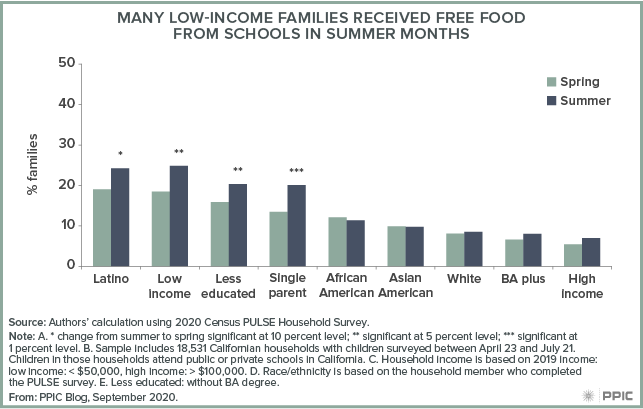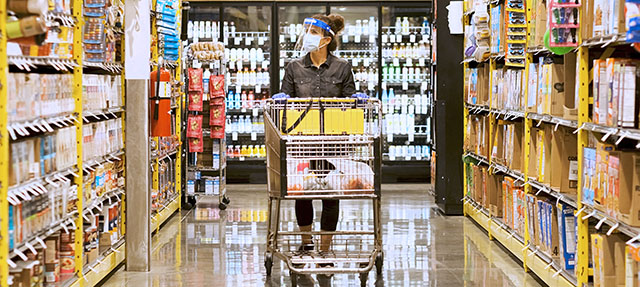Last week, the US Department of Agriculture (USDA) extended meal waivers for children through the end of 2020 as COVID-19 continues to challenge family finances and school operations. Through these meal waivers, school districts can continue feeding students—whether they are learning in the classroom or virtually—with fewer standard restrictions in place. As they did in the spring and summer, schools can serve free, grab-and-go meals outside of regular school settings to all children under 18.
The waiver extension is an about-face for the USDA after an earlier decision that required schools to determine eligibility for free or reduced price meals—as is normally the case—as schools started up this fall.
Since the onset of the pandemic, schools had set up more than 4,700 grab-and-go sites across California. However, schools distributed fewer meals than during the 2018–19 school year. Nationwide, 293 million lunches were served during April 2020, 43% lower than April 2019.
Food insecurity is negatively associated with child development, psychosocial health, and academic performance. In California, 14% of families with children reported having insufficient food in spring and summer 2020—and the problem was more acute among disadvantaged communities. An alarming 37% of African American families did not have enough food to eat during spring 2020, a rate nearly five times higher than for white families and nearly 10 times higher than for Asian American families.

This summer, however, food insufficiency did not increase or even dropped for most groups. Asian-Americans were the only group to see an increase (from 4% to 9%). Starting in mid-May, California families started to receive Pandemic-EBT (P-EBT) cards, which provided up to $365 on ATM-like cards to buy groceries to replace missed school meals. As of mid-August, the state had distributed these cards, worth a total of $1.4 billion, to families of 3.7 million low-income students. In the summer months, more families also obtained free food from schools. For instance, 25% of low-income families received free meals from schools between May and July, up from 18% in the spring.

This pandemic shines a spotlight on the multiple roles schools play in the lives of children and their families. Ultimately, how much the pandemic affects food insufficiency among school children will depend on how quickly the spread of the virus is controlled and when school closures are relaxed. Extending meal programs and limiting restrictions through the end of the year is a promising step toward limiting the impact. The state has included $112 million in the 2020–21 budget to help districts serve grab-and-go meals during the fall. Federal action to extend P-EBT and to increase Supplemental Nutrition Assistance Program (SNAP) benefits could also help to fill gaps.





